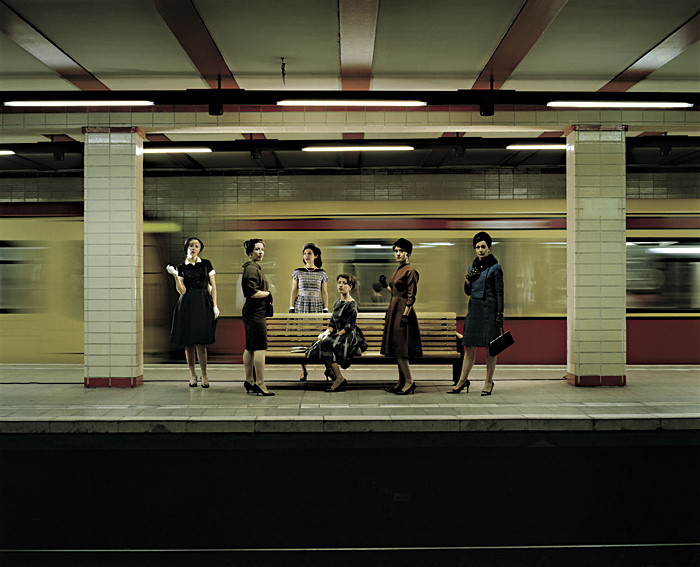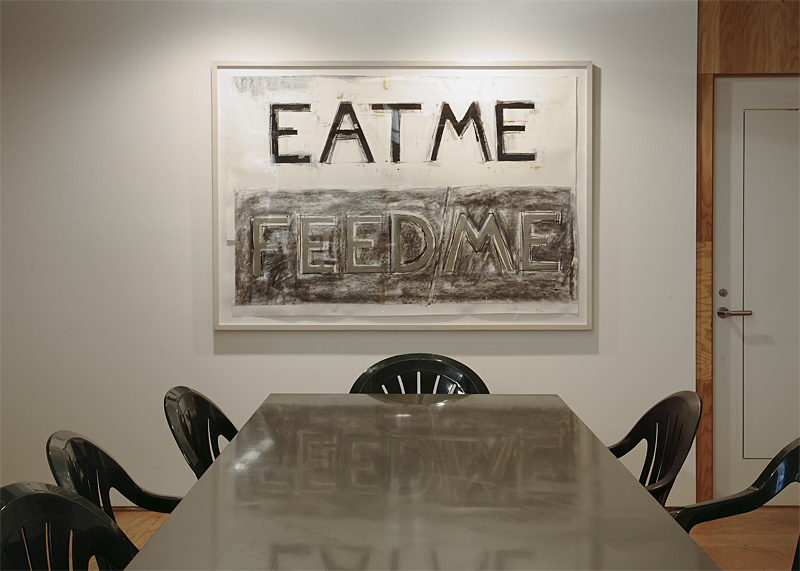It’s the ’60s again—with empire-waist minidresses, thick black eyeliner, and clearly defined gender roles—in Eve Sussman’s 83-minute film, The Rape of the Sabine Women, the central piece in “Adaptation” at the Henry Art Gallery. There are six video works in this traveling exhibit from Chicago’s Smart Museum, including reimaginings of Moby Dick, Truffaut’s The Wild Child, and Stravinsky’s 1923 ballet score Les Noces. But the Sabine Women, abducted in myth, here steal the show.
When Sussman spoke at the Henry in late November, she summed up the legend this way: “Some men stole some women and a fight happened.” This is of course a simplified version of the mythical founding of Rome, in which Romulus, faced with a lack of women, organized an abduction (a raptio, mistranslated as rape) of Sabine women in order to ensure the survival of his people. This story has inspired many paintings throughout art history: Jacques-Louis David’s 1799 Intervention of the Sabine Women serves as a visual source for Sussman’s piece.
It was an epic undertaking, with a cast of hundreds, filmed on location. Sussman’s previous project—done, like this one, with her New York artists’ collective known as The Rufus Corporation—was 89 Seconds at Alcazar, a live depiction of Diego Velasquez’s Las Meninas, which was shown at the 2004 Whitney Biennial. Here the plot is thicker and messier. The Rape of the Sabine Women is set in Berlin, as well as in Athens and Hydra, Greece. We follow a group of black-suited men from the Roman exhibit at the Pergamon Museum passing through colorless airports and subways, through an abduction scene in a busy Greek meat market, to an idyllic waterfront retreat.
The film moves from somber black and white to rich color, in the blood of the meat and the vibrant colors of the women’s dresses. (The men remain black and white throughout.) The soundtrack by composer Jonathan Bepler, who also wrote music for Matthew Barney’s Cremaster films, is similarly epic, featuring a coughing chorus, an 800-person vocal ensemble, and, during the meat-market scene, music made with knives.
Eventually the film turns from allegorical to intimate. The pivotal scene involves a woman and a man whispering and flirting on a couch, the first glimpse of happiness we’ve seen. Time slows down as we witness desire, and what might have been a change in history.
The climax of the film, though, is a tableau that depicts the Sabine women trying to make peace between their warring Roman husbands and Sabine fathers. We see a massive crowd, the men in black, the women in color, with smoky dust falling over the scene. The movement slows, and with a near sepia tint, a re-envisioning of the David painting reveals itself.
Also in “Adaptation,” Arturo Herrera’s black and white abstractions, set to Stravinsky’s booming score, seem to flash and disappear on multiple screens. Guy Ben-Ner’s Moby Dick and Wild Boy are playful pieces, staged in the artist’s small New York City home, featuring his children. Ben-Ner makes a ship out of his kitchen counter by placing a mast into the sink, while a sloping hill has been installed in the Henry’s main gallery, mirroring the one his son scampers out of, a feral child living with rabbits. It’s compelling and fun, and eminently watchable.
I was less captivated by Catherine Sullivan’s four-screen video interpretation of the classic e-mail scam involving a Nigerian inheritance—the only piece here not “adapted” from another work of art. The Chicago artist created an over-the-top narrative, involving Neanderthals in hair shirts, set in a grand Miami estate. The adjacent single video screen was more entrancing, with pixilated, color-saturated images of teenage girls in poufy white dresses, set at the same Miami mansion, paired with footage of a twirling male ice skater.









